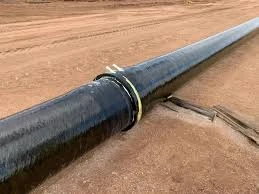
-
 Afrikaans
Afrikaans -
 Albanian
Albanian -
 Amharic
Amharic -
 Arabic
Arabic -
 Armenian
Armenian -
 Azerbaijani
Azerbaijani -
 Basque
Basque -
 Belarusian
Belarusian -
 Bengali
Bengali -
 Bosnian
Bosnian -
 Bulgarian
Bulgarian -
 Catalan
Catalan -
 Cebuano
Cebuano -
 China
China -
 China (Taiwan)
China (Taiwan) -
 Corsican
Corsican -
 Croatian
Croatian -
 Czech
Czech -
 Danish
Danish -
 Dutch
Dutch -
 English
English -
 Esperanto
Esperanto -
 Estonian
Estonian -
 Finnish
Finnish -
 French
French -
 Frisian
Frisian -
 Galician
Galician -
 Georgian
Georgian -
 German
German -
 Greek
Greek -
 Gujarati
Gujarati -
 Haitian Creole
Haitian Creole -
 hausa
hausa -
 hawaiian
hawaiian -
 Hebrew
Hebrew -
 Hindi
Hindi -
 Miao
Miao -
 Hungarian
Hungarian -
 Icelandic
Icelandic -
 igbo
igbo -
 Indonesian
Indonesian -
 irish
irish -
 Italian
Italian -
 Japanese
Japanese -
 Javanese
Javanese -
 Kannada
Kannada -
 kazakh
kazakh -
 Khmer
Khmer -
 Rwandese
Rwandese -
 Korean
Korean -
 Kurdish
Kurdish -
 Kyrgyz
Kyrgyz -
 Lao
Lao -
 Latin
Latin -
 Latvian
Latvian -
 Lithuanian
Lithuanian -
 Luxembourgish
Luxembourgish -
 Macedonian
Macedonian -
 Malgashi
Malgashi -
 Malay
Malay -
 Malayalam
Malayalam -
 Maltese
Maltese -
 Maori
Maori -
 Marathi
Marathi -
 Mongolian
Mongolian -
 Myanmar
Myanmar -
 Nepali
Nepali -
 Norwegian
Norwegian -
 Norwegian
Norwegian -
 Occitan
Occitan -
 Pashto
Pashto -
 Persian
Persian -
 Polish
Polish -
 Portuguese
Portuguese -
 Punjabi
Punjabi -
 Romanian
Romanian -
 Russian
Russian -
 Samoan
Samoan -
 Scottish Gaelic
Scottish Gaelic -
 Serbian
Serbian -
 Sesotho
Sesotho -
 Shona
Shona -
 Sindhi
Sindhi -
 Sinhala
Sinhala -
 Slovak
Slovak -
 Slovenian
Slovenian -
 Somali
Somali -
 Spanish
Spanish -
 Sundanese
Sundanese -
 Swahili
Swahili -
 Swedish
Swedish -
 Tagalog
Tagalog -
 Tajik
Tajik -
 Tamil
Tamil -
 Tatar
Tatar -
 Telugu
Telugu -
 Thai
Thai -
 Turkish
Turkish -
 Turkmen
Turkmen -
 Ukrainian
Ukrainian -
 Urdu
Urdu -
 Uighur
Uighur -
 Uzbek
Uzbek -
 Vietnamese
Vietnamese -
 Welsh
Welsh -
 Bantu
Bantu -
 Yiddish
Yiddish -
 Yoruba
Yoruba -
 Zulu
Zulu
FRP Solutions for Steel Smelting Facilities and Their Benefits
FRP Products in Steel Smelting Plants Enhancing Efficiency and Durability
In the ever-evolving landscape of steel production, the utilization of advanced materials is paramount for enhancing efficiency and sustainability. Fiberglass-reinforced plastics (FRP) have emerged as a game-changing solution in this sector, particularly within steel smelting plants. This article delves into the various FRP products used in steel smelting and highlights their advantages in promoting durability, safety, and cost-effectiveness.
Steel smelting is an energy-intensive process that involves the reduction of iron ore into liquid iron, which is then converted into steel. Throughout this process, equipment is exposed to extreme temperatures, corrosive environments, and mechanical stresses. Traditional materials such as steel and concrete often succumb to corrosion and wear over time, leading to increased maintenance costs and downtime. This is where FRP products come into play.
FRP Products in Steel Smelting Plants Enhancing Efficiency and Durability
Another significant application of FRP products is in corrosion-resistant equipment and piping. In steel smelting plants, various chemicals and byproducts can be highly corrosive, necessitating materials that withstand such harsh environments. FRP pipes and tanks are resistant to acids, alkalis, and salts, ensuring long-lasting performance even in the most challenging conditions. By incorporating FRP in their operations, steel smelting plants can significantly extend the lifespan of their equipment, thereby minimizing replacement costs and improving operational reliability.
frp products for steel smelting plant

Safety is another critical aspect where FRP materials excel. The low thermal conductivity of FRP products makes them an excellent choice for insulating applications. By utilizing FRP insulation panels, smelting plants can effectively manage heat loss and control temperatures within the facility. This not only improves energy efficiency but also creates a safer working environment for employees. Additionally, FRP is non-conductive and does not spark, providing an enhanced level of safety in flammable environments.
The lightweight nature of FRP products also contributes to their installation and maintenance advantages. Traditional materials require heavy lifting equipment and extensive labor for installation, which can inflate project costs and labor expenses. Conversely, FRP products can often be handled and installed with minimal equipment, reducing both time and labor required for installation. Moreover, their resistance to corrosion and wear negates the need for frequent inspections and repairs, leading to significant savings over the lifecycle of the product.
Incorporating FRP products in steel smelting plants not only enhances efficiency but also aligns with sustainable practices. The use of these materials can lead to lighter and more energy-efficient designs, reducing the overall carbon footprint of the manufacturing process. Furthermore, as industries worldwide strive for greater sustainability, the adoption of eco-friendly materials like FRP is increasingly becoming a standard practice.
In conclusion, FRP products represent a transformative shift in the steel smelting industry. Their durability, corrosion resistance, lightweight characteristics, and safety features make them an optimal choice for a variety of applications within smelting plants. As technology continues to advance, we can expect further innovations in FRP materials, ultimately leading to even greater improvements in efficiency, safety, and sustainability for the steel production sector. By embracing these advances, steel smelting operations can better navigate the challenges of the modern manufacturing landscape.
Latest news
-
Exploring the Benefits of Top Hammer Drifter Rods for Enhanced Drilling PerformanceNewsJun.10,2025
-
High-Precision Fiberglass Winding Machine for GRP/FRP Pipe Production – Reliable & Efficient SolutionsNewsJun.10,2025
-
FRP Pipes & Fittings for Shipbuilding - Corrosion-Resistant & LightweightNewsJun.09,2025
-
Premium FRP Flooring Solutions Durable & Slip-ResistantNewsJun.09,2025
-
Premium Fiberglass Rectangular Tanks Durable & Lightweight SolutionNewsJun.09,2025
-
Tapered Drill String Design Guide Durable Performance & UsesNewsJun.09,2025









